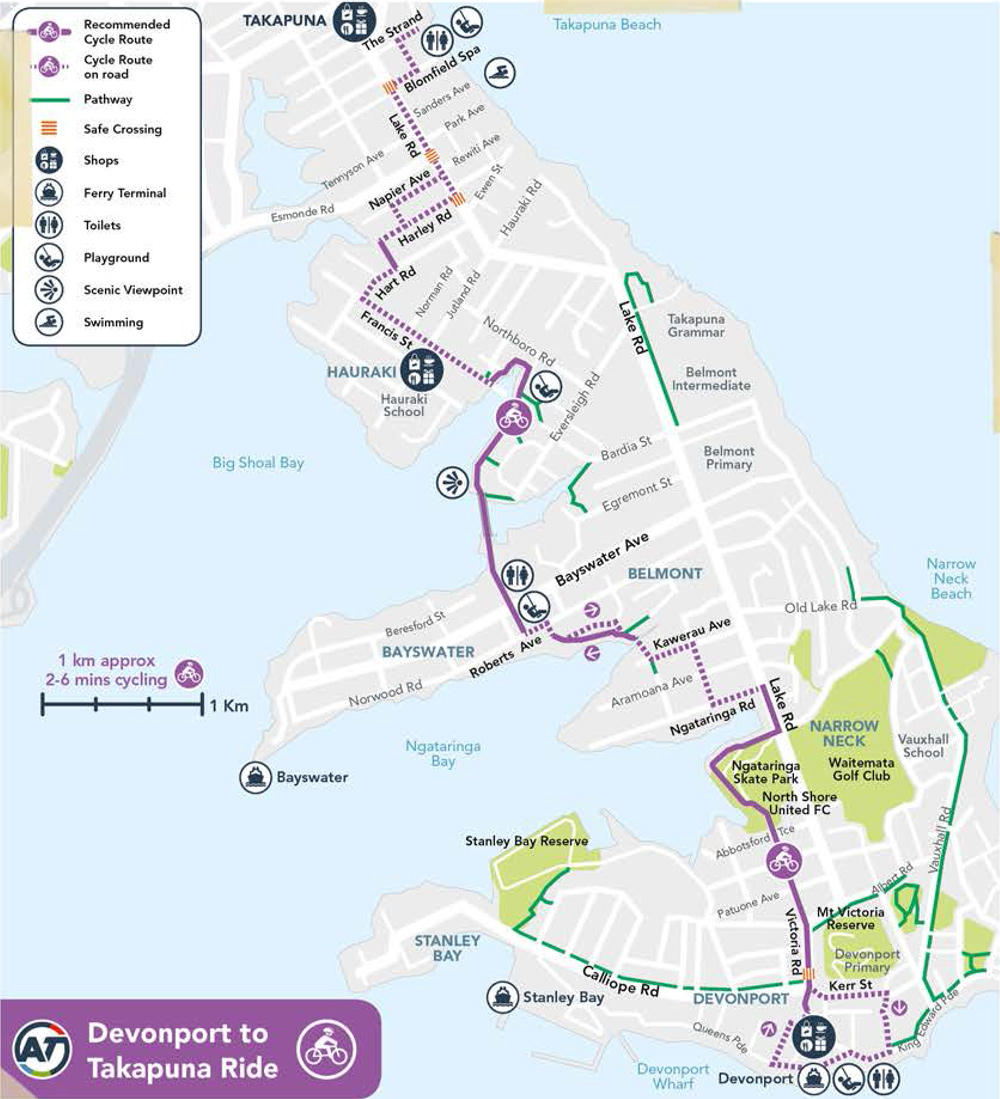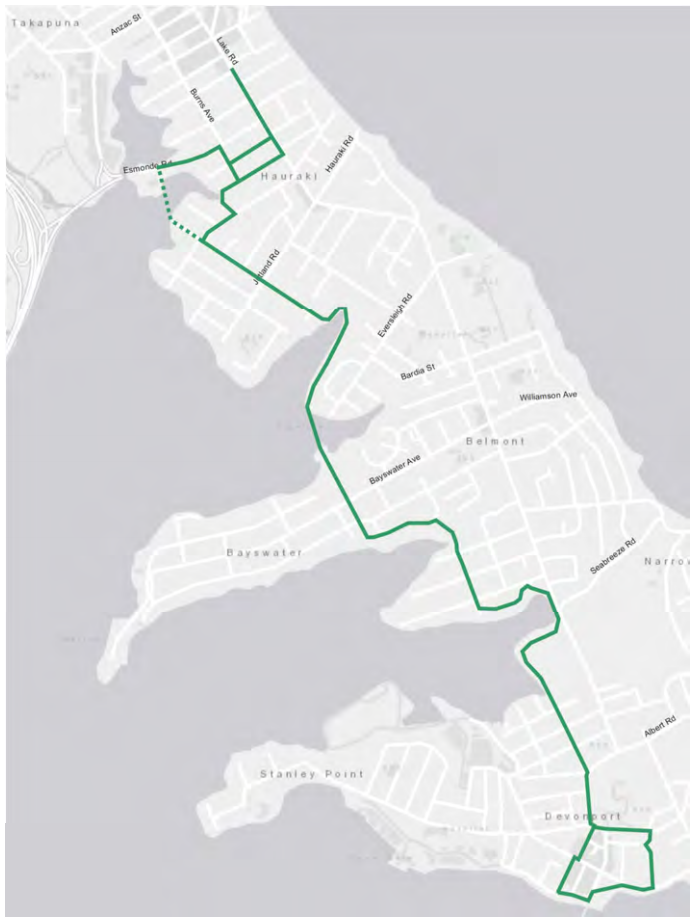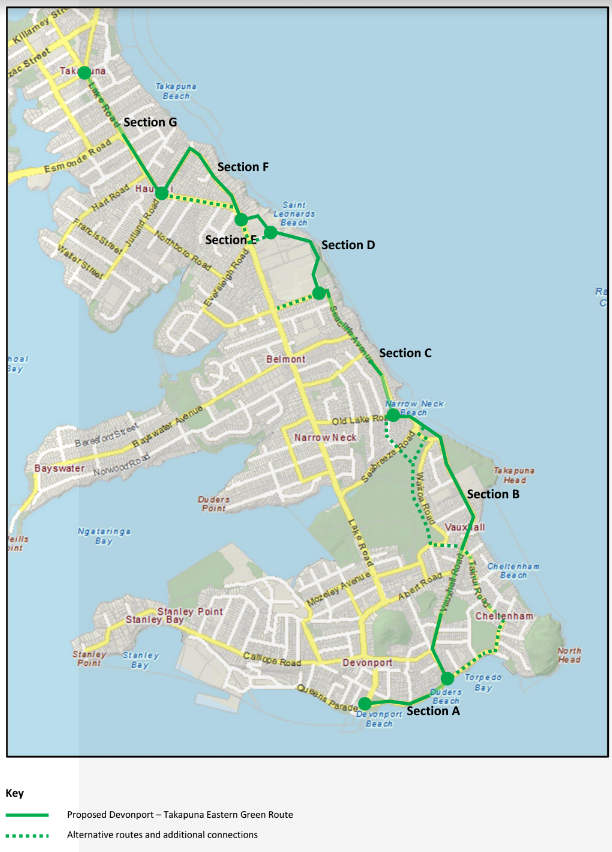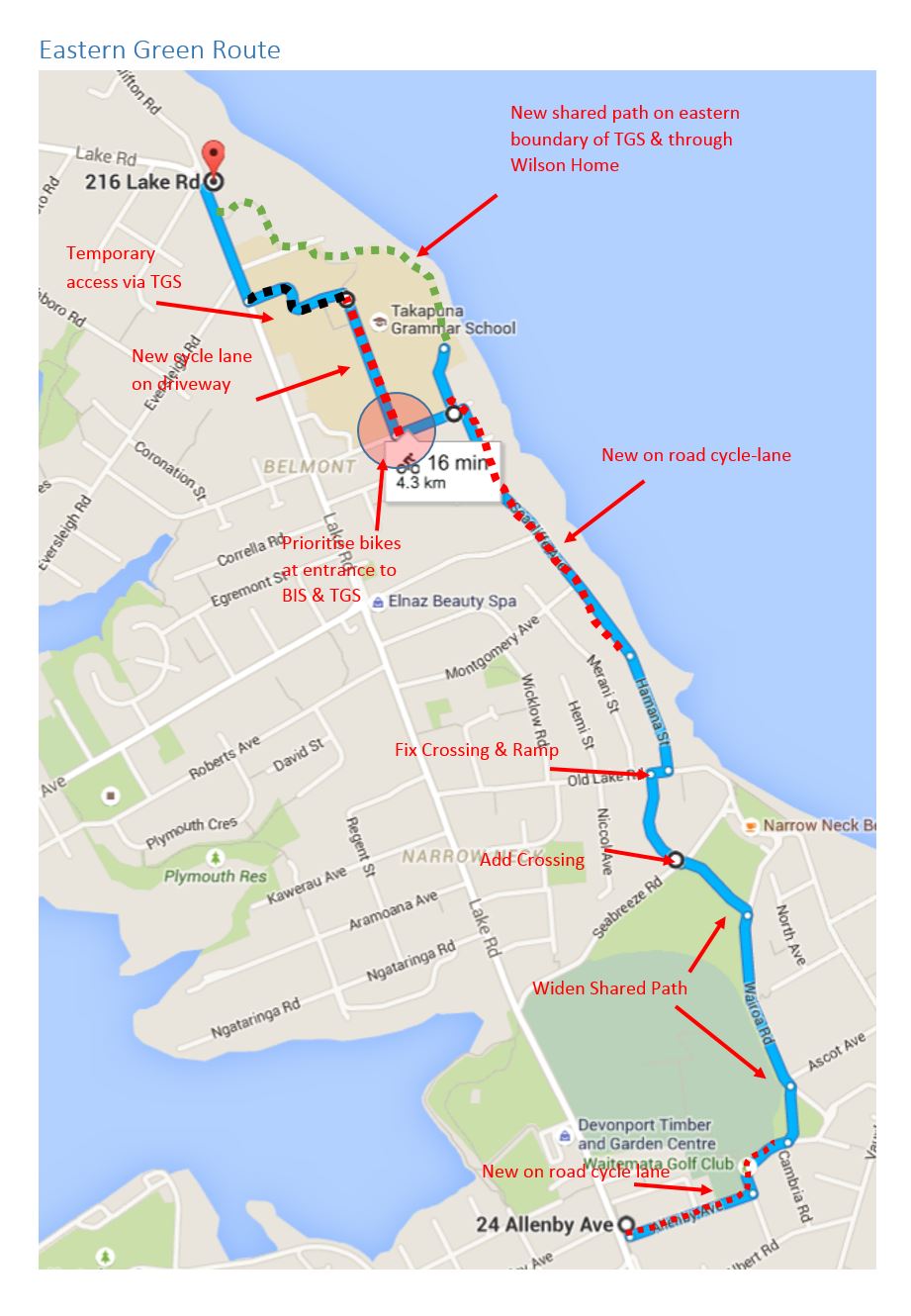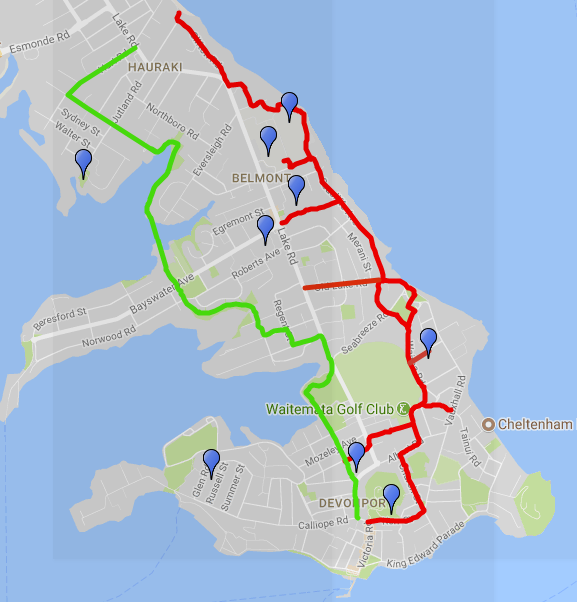As anyone who lives on, works in, or visits the North Shore knows, Lake Rd is the only arterial access to the Devonport peninsula. At peak times and on weekends it can grind almost to a halt – if you bike rather than drive, you’ll have noticed this in passing… quite literally. So it’s under a lot of pressure to be as efficient as possible.

Auckland Transport is currently investigating three investment approaches to improve the ‘accessibility, reliability, and availability of travel choices to and from the Devonport peninsula’.
One option is cheap and quick. Another is long-term and costly. While the third – given a couple of crucial tweaks – is juuuuuust right.
Consultation is open until Saturday 8 July – and it’s really, really important we all give feedback.
Why? Because some people – including within the Local Board – are convinced that taking away the bike lanes on Lake Road will magically fix all the issues.
It’s the 21st century, folks. We know better than that, so we need to support AT in doing better than that.
It’s also really, really important to give individual feedback – because last time Bike Auckland collated hundreds of your responses (for the Queen St section of the Northcote Safe Cycle Route), they were effectively counted together by AT as one (1) submission. Yeah, not ideal.
Here’s the link for feedback on the future Lake Road. Please take a moment to add your individual voice!
We support the Medium Investment Option, with prioritised cycling infrastructure – see below for how we’d answer the four feedback questions; feel free to riff on these.
Q1. What do you think about our approach in general?
We agree that putting walking, cycling, public transport and high-occupancy vehicles first, in that order, is the best way to improve the efficiency of the Lake Rd corridor.
Q2. How you would rank the levels of investment in this approach? Why?
The Medium investment option is our #1 preference – provided you speed up the delivery of quality bike infrastructure on the arterials (the length of Lake Rd, Bayswater Ave and Esmonde Rd), and supplement this with early construction of a cycling network across the peninsula’s streets (the Western and Eastern Green Routes, supplemented by a mix of Greenways and quiet streets). Doing this will provide the best value for money, sooner, and will most effectively supply the efficiency you seek.
Q3. What would make you consider using alternative modes of transport (e.g. cycling, bus, ferry, walking) instead of driving?
Safer cycleways and safer streets for biking and walking, for starters!
Q4.Do you have any other comments or suggestions about improving Lake Road?
[Over to you]
Here’s a summary of Bike Auckland’s position, developed in consultation with our local ‘burb dynamos from Bike Devonport and Bike Shore.
Bike Auckland endorses AT’s desire to increase the efficiency of the Lake Rd corridor by focusing on improvements for walking, cycling, public transport and high-occupancy vehicles.
We favour the Medium investment option, with these two provisos:
- Bring forward good quality continuous cycling infrastructure the length of the main arterials: Lake Road, Bayswater Avenue and Esmonde Road.
- Prioritise the creation of a safe cycling network within the peninsula, underpinned by the Western and Eastern Green Routes, and supplemented by a mix of Greenways and quiet streets.
The full Bike Auckland submission runs to 17 pages, and strongly supports improvements for walking, high-occupancy vehicle lanes, and bus lanes, as well as for bikes. Below, we give you the short and bike-focused version!
The context
- Travel demand on the peninsula is only going to rise, both from intensified housing, and from more visitors, given its proximity to the city (especially once SkyPath and SeaPath are built).
- Lake Rd is terribly inefficient, mainly because so many cars are carrying just one person each: at peak times, the average occupancy is 1.2 passengers per vehicle.
- The resulting congestion makes travel times unreliable – and this will get worse if nothing is done.
- The space AT has to work with – the road reserve – is narrow and not easily widened.
- Travel choices are currently limited. For most, walking or driving are the only feasible options.
- Ferries are hard to get to, don’t run as often (or as late) as people need, aren’t integrated with other public transport (especially ticket-wise), and only go to a few destinations.
- Likewise, the bus timetable isn’t optimal, and travel times are unreliable due to congested roads.
- A lot of people who would love to go by bike, can’t – due to lack of connections and a generally hostile road environment that feels unsafe and puts many off who could easily cycle.
Above all, AT’s own analysis shows around half of people using Lake Rd are making short local trips. The distance between Devonport and Takapuna is only 6km. So there’s huge potential to make a huge dent in congestion by giving people real alternatives to jumping in the car for short trips. But given all the factors above, people currently don’t have meaningful choices. They can’t easily opt for the best, most efficient, most social, most healthy or most enjoyable transport mode to meet their travel needs (for example, walking, biking, or catching the bus for local trips). Something needs to change.
The response
AT and its consultants have correctly identified that the efficiency of the corridor must be improved, to ‘improve the amount of people that can move along Lake Rd’.
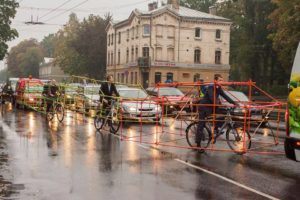
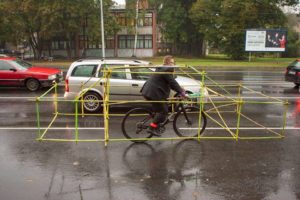
We agree – the design options need to focus on moving people quickly, reliably and efficiently. So it should prioritise transport modes that deliver to these goals – in priority order, highest at top:
- Walking
- Cycling
- Public Transport (buses and ferries)
- Special needs vehicles (emergency services, freight)
- High occupancy vehicles (motorcycles, full cars)
- Low occupancy vehicles (single/dual occupant cars)
- Parked vehicles
This approach is endorsed by the Lake Rd Corridor Management Plan, which states:
Cyclists and pedestrians have been identified as the highest priority along the entire length of the corridor given the existing popularity for cycling and walking for recreation and commuting purposes to work and schools, their potential for growth and strategic policies requiring their increased support.
The options
AT proposes three investment options: Low, Medium, and High, which can be boiled down as follows:
Low investment – around $10M – 5 year delivery timeframe
- Re-mark the road within the existing kerbs to create new segments of transit lanes, whilst retaining the existing cycle lanes
- Change the existing westbound bus lane on Esmonde Road into a transit lane
- Provide safe walking and cycling facilities along Bayswater Ave (between the ferry terminal and Lake Rd)
Medium investment – around $30 to $40M – 5 to 10 year delivery timeframe
- Shift some kerb lines to create enough width for sections of transit lanes and cycle lanes along Lake Road
- Change the existing westbound bus lane on Esmonde Road into a transit lane
- Provide safe walking & cycling facilities along Bayswater Ave (between the ferry terminal and Lake Road)
- Enable improvements at a number of intersections along Lake Road to improve the traffic flow.
High investment – more than $70M – 10+ year timeframe
- Widen Lake Road beyond the current property boundaries to achieve room for all transport modes.

The Goldilocks rationale
Here’s why we’d reject the High investment option:
- It’s unreasonable for property owners to give up their road frontages
- Land acquisition is extremely expensive
- The BCR for this option is correspondingly low
- And then there’s the opportunity cost: with limited transportation funding, AT is better off investing in projects that deliver more benefits (e.g. high-BCR walking and cycling projects)
- The timeframe to delivery is too long – the need for congestion relief is now
- If you’re spending that much money, it should be integrated with the extension of light rail from Takapuna to Milford, Bayswater and Devonport.
Here’s why we’d reject the Low investment option:
- It doesn’t deliver sufficient transportation benefits over the longer term
- It doesn’t deliver sufficient cycling benefits.
And here’s why we think the Medium investment option strikes the right balance: it’s a palatable bowl of porridge, but needs these additions to be truly nourishing for the community…
- Shorten the delivery timeframe. 5 to 10 years is too long – the need is now!
- Put more emphasis on cycling solutions, to cater for the large number of short trips people already make.
- Align with the Lake Rd Corridor Management Plan, which puts a higher priority on good quality cycling infrastructure – so, let’s transfer the ‘separated cycle lanes’ initiative from the High investment option into the Medium option.
- Think holistically: the Esmonde, Lake and Bayswater arterials (while important) are just one part of the solution – we need a network of safe and attractive bike infrastructure over the entire peninsula bounded by SH1 and Takapuna.
The big picture: why more people biking is better for everyone
We’re not saying everyone on the peninsula has to jump on a bike. We’re saying, people of all ages and levels of fitness are able to embrace cycling for short trips within the Devonport Peninsula, and – especially with the addition of e-bikes – to Takapuna and beyond. This includes:
- Children – for school, sports & social reasons
- Local residents – for social, shopping, recreation & sports
- Tourists and day-trippers
- Commuters – both within and beyond to the Devonport peninsula, including Navy personnel and ferry commuters
- Recreational sports cyclists and special events.
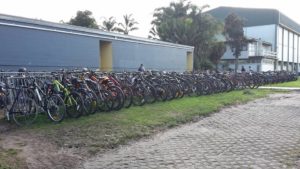
Even the limited existing cycling infrastructure on Lake Rd (bike lanes and shared paths) has already had a positive effect on travel patterns, particularly regular daily trips by ordinary people:
- School trips – Takapuna Grammar School and Belmont Intermediate have a 30% mode share of pupils commuting by bike, one of the highest in Auckland!
- Commuter trips – there are approximately 3-400 cycle movements/day at the Lake Rd cycle counter near Takapuna Grammar School. This is one of the busiest bike routes in Auckland outside the CBD.
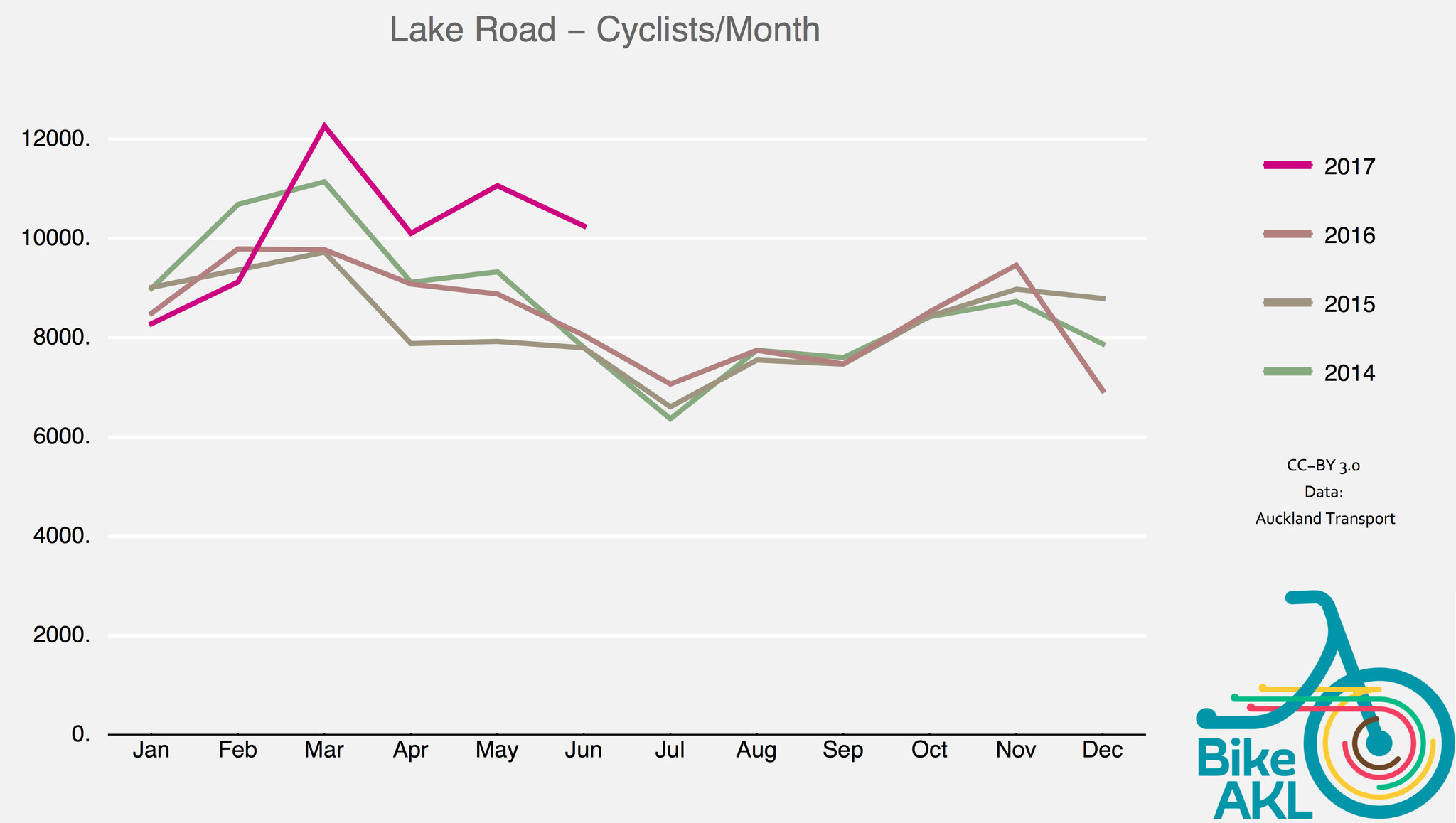
Additionally, the existing Green Route to the western side of Lake Rd offers good connectivity with an additional recreational focus. We’re confident a further improved safe cycling network – including an eastern Green Route – will build on the successes delivered by the existing infrastructure.
Above all, think of the benefits that will accrue to the neighbourhood with more kids on bikes, more locals on bikes, more visitors and more shoppers on bikes. Less congestion, fewer emissions, quieter streets, healthier and more connected communities, thriving local businesses, empowered and confident kids who can travel their own streets at their own speed, scenic and convivial school runs, sporting events given a sporting chance of starting on time with everyone warmed up and ready to go, the freedom to do a shopping dash on a basket bike, rather than sitting in a car getting frustrated…
Here’s the thing: every time Auckland addresses a transportation corridor like this, we’re not just fixing the problems we have now, we’re building the future we’d like to live in. Let’s get it right.
